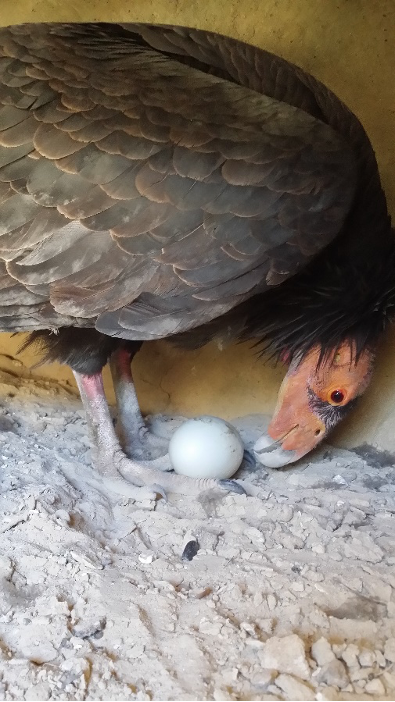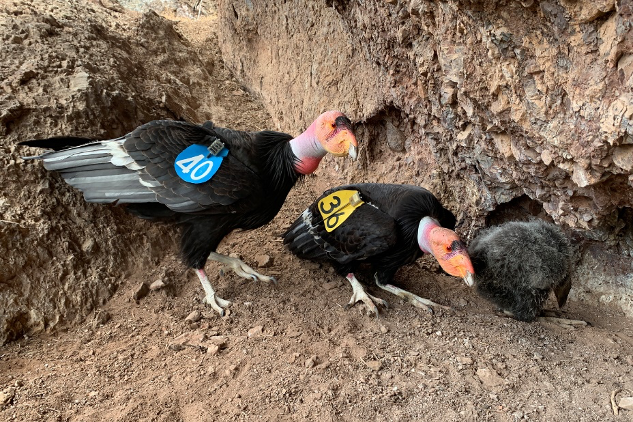By Victoria Bakker and Myra Finkelstein
Related paper: Lead, trash, DDE, and young age of breeders linked to lower fertility in first two decades of reintroduction for critically endangered California Condors in California by Victoria J. Bakker, Myra E. Finkelstein, Daniel F. Doak, Rachel Wolstenholme, Alacia Welch, Joe Burnett, Arianna Punzalan, Joseph Brandt, Steve Kirkland, Nadya E. Seal Faith, Erin R. Lehnert, Estelle A. Sandhaus Ornithological Applications.

Our study of reproduction in California Condors (Gymnogyps californianus) emerged from a desire to identify optimal management strategies for this critically endangered species recovering from complete extirpation in the wild. What makes our study unique is our data. Our team has collected more than two decades of near-daily observations coupled with health data for every free-flying condor in California from the initiation of the reintroduction program in 1992 through 2018. Our dataset consists of condors from two California flocks — one located in central California jointly managed by the Ventana Wildlife Society and Pinnacles National Park and the other located in southern California managed by the U.S. Fish and Wildlife Service. Having such a comprehensive dataset allowed us, for the first time, to evaluate factors influencing the individual components of reproduction, which we separated into the probabilities of becoming a first-time breeder (i.e., recruiting), of rebreeding, of hatching an egg, and of fledging a chick.
Adapted for a long lifespan and slow and steady reproduction, threats to survival have the greatest effect on the speed of recovery for California Condors. However, recovery will also require robust wild reproduction, and condor population growth is currently dependent upon releases of captive-bred individuals. Our fine-grained assessment of reproduction helps us identify and ultimately target threats at specific reproductive stages, resulting in an overall prioritization of resources to yield the most ‘bang for the manager’s buck.’

At the inception of the California Condor recovery program, reintroduced flocks consisted of young captive-bred individuals without experience. We found that condor reproduction was positively associated with factors linked to experience — both breeding experience and experience with potential mates. As such, birds that were older had higher reproductive rates as did birds who spent more time in the wild.
Condors also faced anthropogenic threats that reduced their reproductive rates. Hatch success was lower for coastal females, presumably due to DDE (dichlorodiphenyldichloroethylene) exposure from feeding on marine mammals. Likewise, trash ingestion was the leading cause of mortality for chicks, and fledge success was lower prior to the implementation of trash management programs. Finally, lead exposure is a well-documented threat to the survival of free-flying condors, but our study showed that lead also lowered reproduction directly via chick mortality and indirectly via the death of a chick’s parents.
Overall our results are encouraging; reproductive success should increase over time as the age and experience of California Condors increases if current and emerging threats to reproduction, including the loss of breeders due to lead poisoning, can be addressed.
good evening I am bryan kirshon from Boston i live in Florida where the wildlife is not only beautiful but diverse but I live on the east coast the California condor is native to the west coast the largest flying bird in north America with an 8 foot wingspan are pushed to the brink of extinction by lead poisoning in their food or prey which is carrion like their relatives the black and the Turkey vultures the only 2 species of vulture native here nothing is wasted when the carcass feed which is important thank you for fighting the good fight for these aerial scavengers by the way a Turkey vulture likes a TV dinner ha ha .